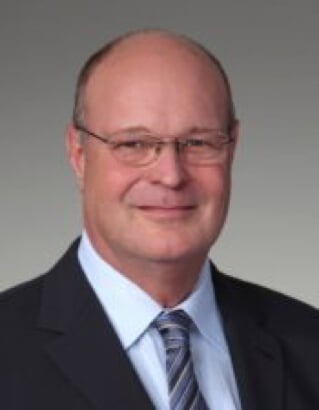If you are a patient about to undergo anterior cervical discectomy and fusion surgery, commonly referred to as ACDF, you are not alone. As one of the most common forms of surgery to relieve neck pain symptoms, a discectomy involves removal of the problematic disk and is usually followed by fusion of the affected cervical vertebrae to ensure stabilization, allowing not only a relief of symptoms but a return to normal activities.
What can you do to prepare for the recovery process after ACDF surgery? Reading this article is a great first step, because an informed patient, who understands the recovery process, will know what to expect, how to avoid complications, and how to maximize the benefits of ACDF.
Health and Wellness Before Surgery
One of the best ways to prepare for ACDF is to maximize your health and fitness prior to surgery. Yes, those who are facing spinal surgery are usually suffering pain and loss of mobility, which place severe restrictions on physical activity, but there are still ways to improve your health. Here are our recommendations:
Quit Smoking: If you currently smoke, it is vital that you quit now, so that you can focus on your recovery without the added burden of nicotine withdrawals. Since ACDF involves the fusion of vertebrae, which occurs over time as the bones grow together, the last thing you want to do is inhibit bone growth, which is exactly what nicotine does. Nicotine is toxic to bone and interferes with the cells (osteoblasts) that grow new bone. Smoking following ACDF dramatically increases the odds that your fusion will not heal properly, so discuss with your doctor ways to quit as soon as possible.
Good Nutrition: A healthy body is more apt to heal, and heal faster, than one that is malnourished, obese, or that has relied on certain drugs (steroids or narcotics) for extended periods in the past. By improving your overall health and nutrition, you will accelerate the healing process and increase your chance of a full recovery.
Chronic Conditions: If you suffer from chronic health conditions, such as diabetes, or have a history of spinal surgeries, you will want to discuss these issues with your doctor, since they may impact your recovery process.
The Recovery Process
Many patients go home the day of ACDF surgery or the next day, so the bulk of your recovery process will take place at home. Your doctor should provide detailed instructions for post-operative care, so here, we’ll simply touch on the main points.
Pain Management: Your doctor will prescribe narcotic pain medication, which you will wean off as healing takes place. Certain over-the-counter pain medications should be avoided, specifically non-steroidal anti-inflammatory drugs (NSAIDS), like aspirin and ibuprofen, since they may impede bone fusion and can increase your bleeding risk in the peri-operative period.
Walking: Your surgical staff should have you up and walking following the procedure, so plan ahead by bringing comfortable, slip-on shoes and clothing that is easy to put on (buttoned shirts, robes, sweats). Regular walking not only accelerates the healing process, but also helps ward off complications, such as blood clots and pneumonia.
Activity: A return to normal activities must be approached cautiously, following doctor’s orders. It may be tempting to take on chores, such as light housework or caring for family, but your primary concern must be to pace these activities with the healing process. Overexertion following surgery can impede healing by interfering with bone growth and fusion, so don’t risk an injury. Take this opportunity to pamper yourself!
Physical Therapy and Beyond: An important stage of your healing will occur under the direction of a physical therapist, who will not only improve your mobility following surgery, but will also teach you exercises to strengthen and tone the affected areas. This typically starts around six weeks post-operatively. Therapists can also aid the healing process by teaching safe techniques for daily activities, such as bending, lifting, and walking. There are also many care options that can help you regain and maintain your active lifestyle.
Knowing the Risks
Although ACDF is a common surgical procedure, there are still risks and complications. One of the risks has to do with location: The incision is made through the front of the neck, in proximity to major veins and arteries. Bleeding, hematomas, and stroke are all possible. As with any spinal surgery, nerve damage is also a risk in ACDF, causing hoarseness, difficulty swallowing, weakness, and even paralysis.
Because of the risks and complications, who you select as a surgeon. Choosing a spinal surgeon who is board certified, fellowship-trained, experienced, and who specializes in the procedure is the best step you can take in preparing for recovery after ACDF surgery. By selecting a qualified surgeon, you will not only get the best treatment and care available, you will also improve your chances of a full recovery.
Do your homework and go with a surgeon who can provide pre- and post-operative care within an integrative facility, one who can see you through the entire healing process. It is also important to note that there are several alternative options to receiving ACDF surgery such as microdiscectomy or artificial discs. Check out our guide to learn more about the treatment options available to you.

About the author
Robert S. Bray, Jr., M.D. Nicknamed “Dr. Fix-It” by The Red Bulletin, Robert S. Bray, Jr., M.D. makes an art of helping the world’s most elite athletes return to push the boundaries of performance. The neurological spine surgeon, recognized globally for his thorough diagnoses and pioneering minimally invasive approach, is quickly redefining sports medicine, one champion at a time. Dr. Bray founded the state-of-the-art, multi-disciplinary DISC Sports & Spine Center (DISC) in 2006 located in Los Angeles, CA. Read more articles by Robert S. Bray, Jr., M.D..






